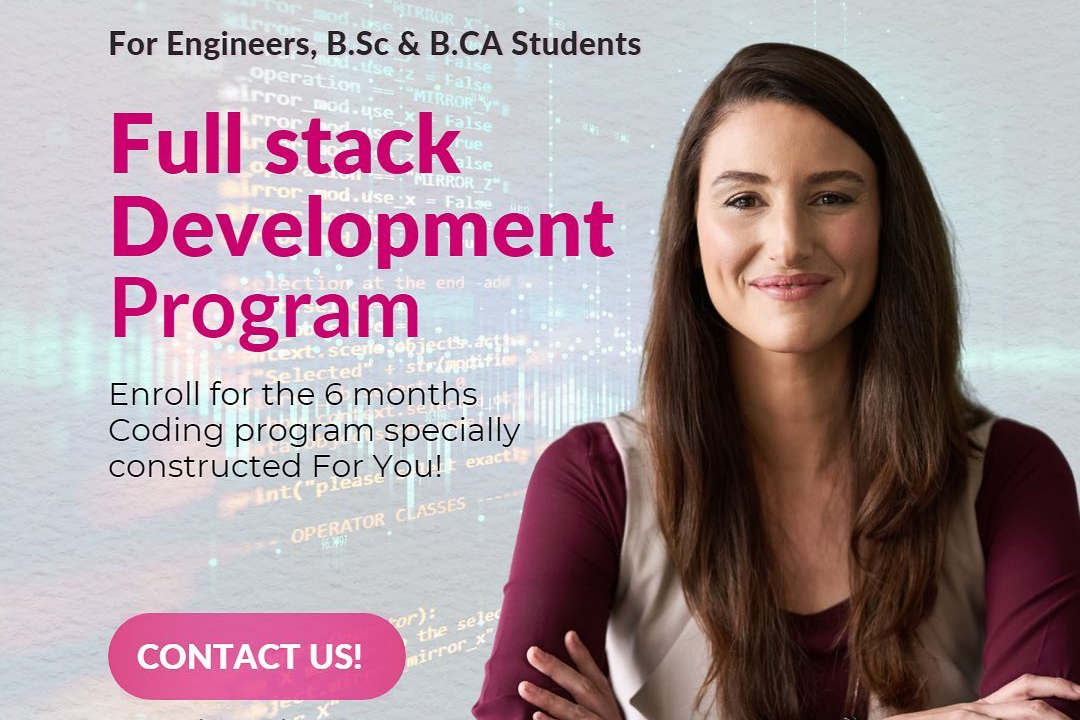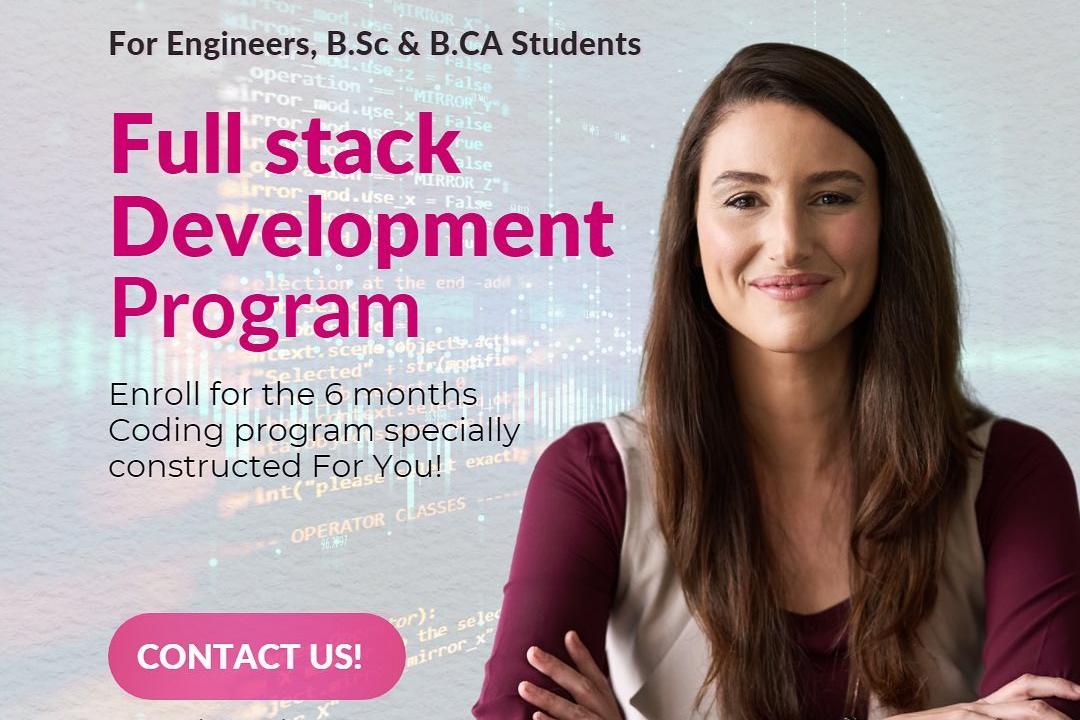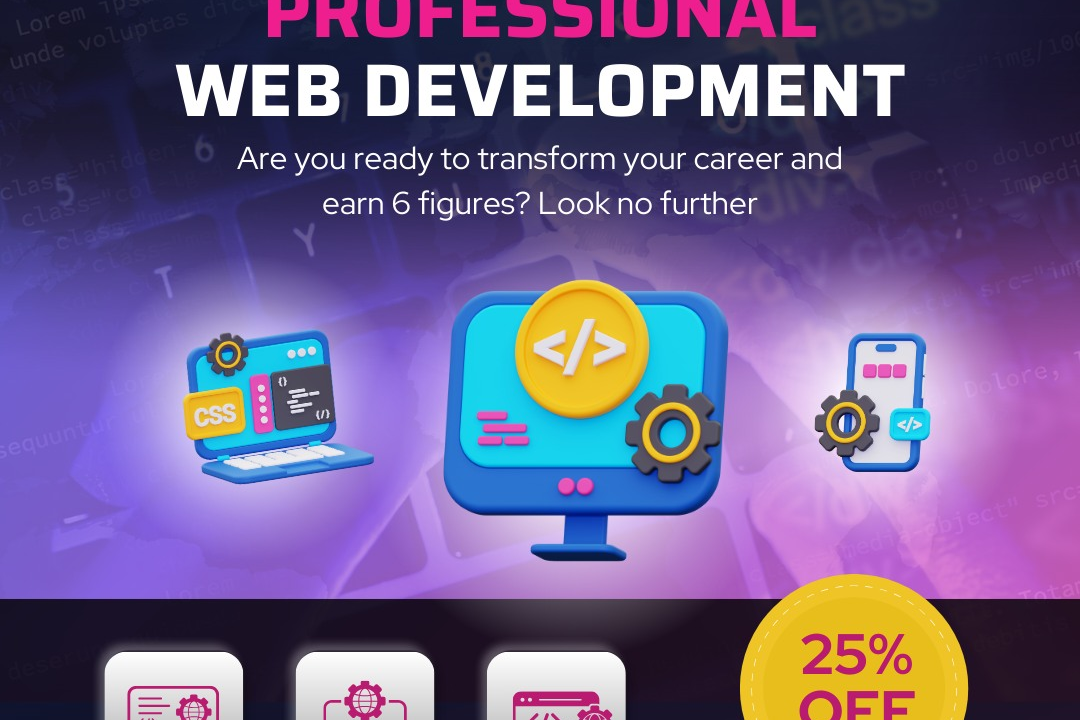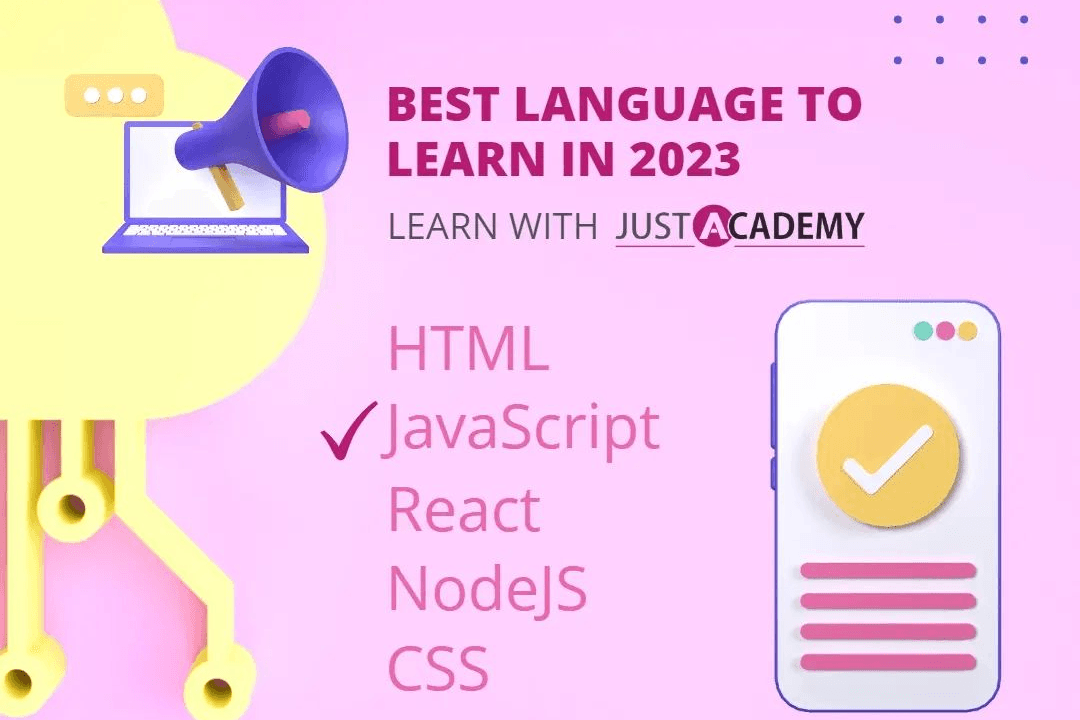Laravel 5.2 Interview Questions
Laravel 5.2 Interview Questions and Answers
Laravel 5.2 Interview Questions
Laravel 5.2 is a robust PHP framework designed for the rapid development of complex web applications. It offers a wide range of features such as an elegant syntax, built-in authentication and authorization mechanisms, flexible routing, and eloquent ORM for easy database interaction. Laravel 5.2 empowers developers to create scalable, maintainable, and testable applications with minimal effort, making it a popular choice for modern web development projects.
To Download Our Brochure: https://www.justacademy.co/download-brochure-for-free
Message us for more information: +91 9987184296
1 - What is the Eloquent ORM and how is it used?
Eloquent is an ORM that allows you to interact with your database more easily by providing an object oriented interface. You can use it to create, read, update, and delete data in your database, as well as perform more complex queries.
2) What is the difference between routing and middleware?
Routing is the process of matching incoming HTTP requests to the appropriate controller actions. Middleware is a way to intercept requests and perform actions on them before they reach the controller actions. Middleware can be used for authentication, authorization, rate limiting, and more.
3) What is the Laravel service container and how is it used?
The Laravel service container is a dependency injection container that allows you to register and resolve services. Services can be anything from simple objects to complex classes. The service container makes it easy to manage dependencies between your classes and to ensure that they are always resolved correctly.
4) What is the Artisan command line tool and how is it used?
The Artisan command line tool provides a number of commands that you can use to interact with your Laravel application. You can use Artisan to create new migrations, models, controllers, and other files. You can also use Artisan to run database migrations, seed your database, and more.
5) What is the Blade templating engine and how is it used?
The Blade templating engine is a powerful tool that allows you to create beautiful and dynamic views for your Laravel applications. Blade provides a number of features, such as conditional statements, loops, and includes, that make it easy to create complex layouts.
6) What is the difference between a view and a template?
A view is a file that contains the HTML code for a specific page in your application. A template is a file that contains the basic structure of your application's pages. You can use Blade to create both views and templates.
7) What is the MVC architectural pattern and how is it used in Laravel?
The MVC architectural pattern is a design pattern that separates your application into three layers: the model layer, the view layer, and the controller layer. The model layer contains the business logic of your application, the view layer contains the HTML code for your application, and the controller layer handles the interaction between the model and view layers.
8) What is the difference between a GET request and a POST request?
A GET request is used to retrieve data from a server, while a POST request is used to send data to a server. GET requests are typically used for retrieving data that is not sensitive, while POST requests are typically used for sending data that is sensitive.
9) What is the difference between a 404 error and a 500 error?
A 404 error is an error that is returned by a server when it cannot find the requested resource. A 500 error is an error that is returned by a server when it encounters an unexpected error.
10) What is the difference between a cookie and a session?
A cookie is a small piece of data that is stored on a user's computer by a web browser. Cookies are typically used to track user information, such as their login status or their shopping cart contents. A session is a server side mechanism for storing user information. Sessions are typically used to store data that is needed for a single user interaction, such as the contents of a shopping cart.
11 - What is the difference between a package and a plugin?
A package is a collection of reusable code that can be installed into your Laravel application. Packages can be used to add new features to your application, such as a payment gateway or a social media integration. A plugin is a smaller piece of code that can be installed into your Laravel application. Plugins are typically used to extend the functionality of a specific package.
12) What is the difference between a service provider and a facade?
A service provider is a class that provides services to your Laravel application. Service providers are used to register services with the service container. A facade is a class that provides a simple way to access services from your Laravel application. Facades are typically used to access services that are provided by service providers.
13) What is the difference between a route and a controller?
A route is a mapping between a URL and a controller action. You can use routes to define the different ways that users can access your application's functionality. A controller is a class that contains the business logic for a specific feature of your application. Controllers are responsible for handling user input and generating the appropriate response.
14) What is the difference between a model and an entity?
A model is a class that represents a real world entity, such as a user or a product. Models typically contain the business logic for a specific entity. Entities are simply data objects that represent a specific piece of data, such as a user's name or a product's price.
15) What is the difference between a relationship and an association?
A relationship is a connection between two models. Relationships can be one to one, one to many, or many to many. Associations are similar to relationships, but they are typically used to describe the relationship between a model and a table in the database.
Strategies to Increase Your Points:
1. Engage with Content:
- Like, comment, and share posts on social media.
- * Participate in discussions on forums and online communities.
- * Create and publish your own content.
- 2. Build a Following:
- * Grow your network by connecting with others in your niche.
- * Join groups and participate in online events.
- * Run contests and giveaways to attract new followers.
- 3. Promote Your Value:
- * Showcase your expertise by sharing valuable insights and knowledge.
- * Offer exclusive content or services to your followers.
- * Host webinars or live streams to connect with your audience.
- 4. Optimize Your Profile:
- * Use a clear and concise profile picture and description.
- * Add relevant keywords to your bio.
- * Link to your website or other social media accounts.
- 5. Track Your Results:
- * Use analytics tools to monitor your performance.
- * Identify what content receives the most engagement.
- * Adjust your strategy based on the feedback you receive.
- 6. Network with Influencers:
- * Reach out to individuals with a large following in your niche.
- * Offer to collaborate or promote their content.
- * Build relationships to increase your visibility.
- 7. Use Cross Promotion:
- * Share your content across multiple platforms to reach a wider audience.
- * Repost or feature other people's content to build reciprocal relationships.
- 8. Run Paid Ads:
- * Consider using paid advertising platforms to boost the reach of your content.
- * Target specific demographics or interests to maximize impact.
- 9. Join Affiliate Programs:
- * Partner with businesses and promote their products or services.
- * Earn points or commissions for every referral you generate.
- 10. Participate in Challenges:
- * Join online challenges or competitions that offer points as rewards.
- * Showcase your creativity or expertise to gain recognition.
- Course Overview
- This course covers essential Laravel 5.2 interview questions to aid in preparation for technical interviews. It delves into concepts such as Eloquent relationships, routing, middleware, authentication, form validation, testing, and debugging, providing a comprehensive overview to enhance your chances of success.
- Course Description
- Prepare for successful Laravel developer interviews with this comprehensive course covering 5.2-specific questions. Explore core principles, syntax, and practical implementation to ace technical challenges related to routing, controllers, models, authentication, and more. Enhance your knowledge and confidence for a competitive edge in the job market.
- Key Features
- 1 - Comprehensive Tool Coverage: Provides hands-on training with a range of industry-standard testing tools, including Selenium, JIRA, LoadRunner, and TestRail.
- 2) Practical Exercises: Features real-world exercises and case studies to apply tools in various testing scenarios.
- 3) Interactive Learning: Includes interactive sessions with industry experts for personalized feedback and guidance.
- 4) Detailed Tutorials: Offers extensive tutorials and documentation on tool functionalities and best practices.
- 5) Advanced Techniques: Covers both fundamental and advanced techniques for using testing tools effectively.
- 6) Data Visualization: Integrates tools for visualizing test metrics and results, enhancing data interpretation and decision-making.
- 7) Tool Integration: Teaches how to integrate testing tools into the software development lifecycle for streamlined workflows.
- 8) Project-Based Learning: Focuses on project-based learning to build practical skills and create a portfolio of completed tasks.
- 9) Career Support: Provides resources and support for applying learned skills to real-world job scenarios, including resume building and interview preparation.
- 10) Up-to-Date Content: Ensures that course materials reflect the latest industry standards and tool updates.
Benefits of taking our course
Functional Tools
- Laravel 5.2 Framework: An open source PHP web application framework used to build dynamic and scalable web applications. It provides a wide range of functionalities, including routing, templating, authentication, and database management.
- 2. Composer: A dependency manager for PHP that makes it easy to install and manage third party libraries and packages.
- 3. Artisan: A command line tool included with Laravel that enables rapid application development and maintenance tasks, such as generating code, managing migrations, and running unit tests.
- 4. Eloquent ORM: An object relational mapping (ORM) system that allows you to interact with your database in an object oriented way, making it easier to query and manipulate data.
- 5. Blade Templating Engine: A powerful templating engine that provides a simple and expressive way to create dynamic and efficient HTML views.
- 6. Eloquent Validator: A tool that provides a consistent and convenient way to validate incoming data, ensuring it meets the required constraints before being processed by the application.
- Effective Content Creation:
- Craft Compelling Headlines: Use strong, attention grabbing headlines that entice users to read your content.
- Write High Quality Content:* Provide valuable, informative, and engaging content that resonates with your audience.
- Optimize for SEO:* Use relevant keywords and optimize your content for search engines to increase visibility.
- Content Promotion and Distribution:
- Promote on Social Media:* Share your content on various social media platforms to reach a wider audience.
- Submit to Guest Blogs:* Offer guest posts on reputable websites within your industry.
- Run Content Ads:* Consider paid advertising campaigns to promote your content to a targeted audience.
- Engage with Your Audience:
- Respond to Comments and Feedback:* Actively engage with your readers by responding to comments, answering questions, and seeking feedback.
- Host Webinars and Q&A Sessions:* Provide opportunities for your audience to interact with you and learn more about your content.
- Build Email Lists:* Collect email addresses from website visitors to nurture relationships and promote your content directly.
- Collaborate with Influencers:
- Identify Relevant Influencers:* Research and collaborate with influencers within your industry who have a loyal following.
- Offer Exclusive Content:* Provide exclusive access to valuable content or insights to influencers in exchange for promotion.
- Create Joint Campaigns:* Run joint campaigns with influencers to reach a wider audience and lend credibility to your brand.
- Use Content Analytics:
- Track Website Traffic:* Use analytics tools to measure website traffic and identify pages that are performing well.
- Monitor Social Media Engagement:* Track likes, shares, and comments on social media posts to gauge the effectiveness of your content.
- Analyze Email Metrics:* Collect data on email open rates, click through rates, and unsubscribes to optimize your email marketing strategy.
- Additional Tips:
- Consider Content Repurposing:* Repurpose existing content into different formats (e.g., blog posts, infographics, videos) to reach a wider audience.
- Stay Up to Date with Industry Trends:* Keep abreast of current content marketing trends and best practices.
- Experiment and Innovate:* Be willing to experiment with different content types, formats, and distribution channels.
Browse our course links : https://www.justacademy.co/all-courses
To Join our FREE DEMO Session:
This information is sourced from JustAcademy
Contact Info:
Roshan Chaturvedi
Message us on Whatsapp:
Email id: info@justacademy.co












